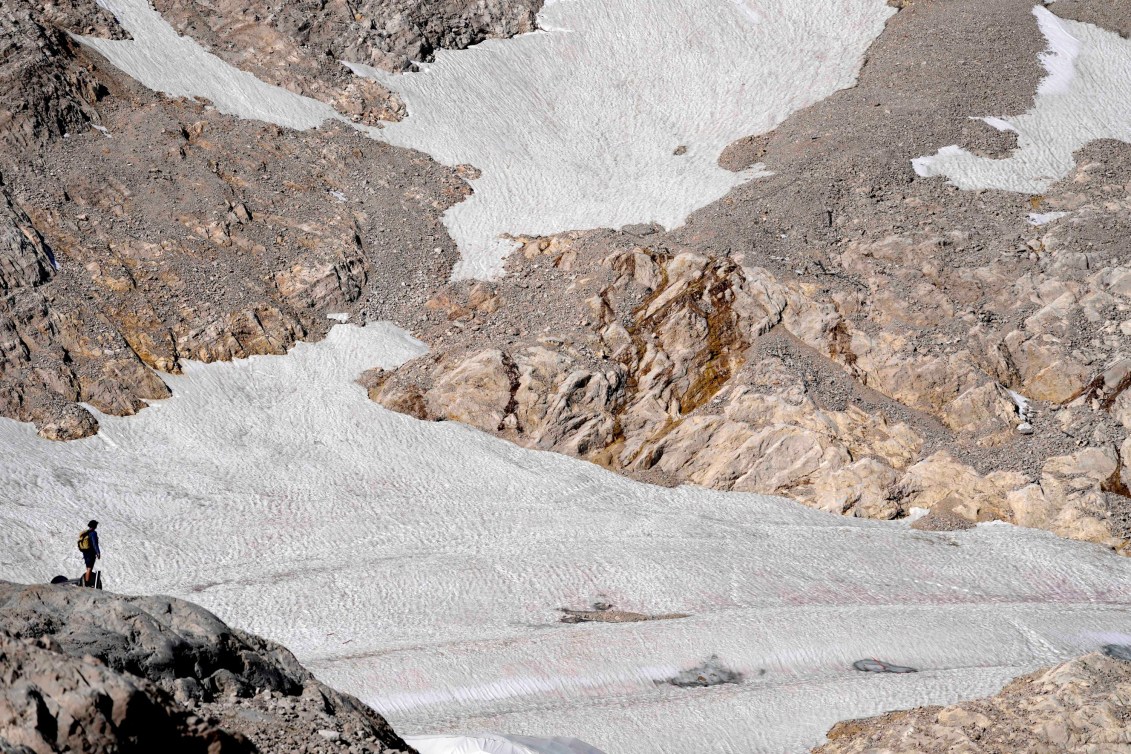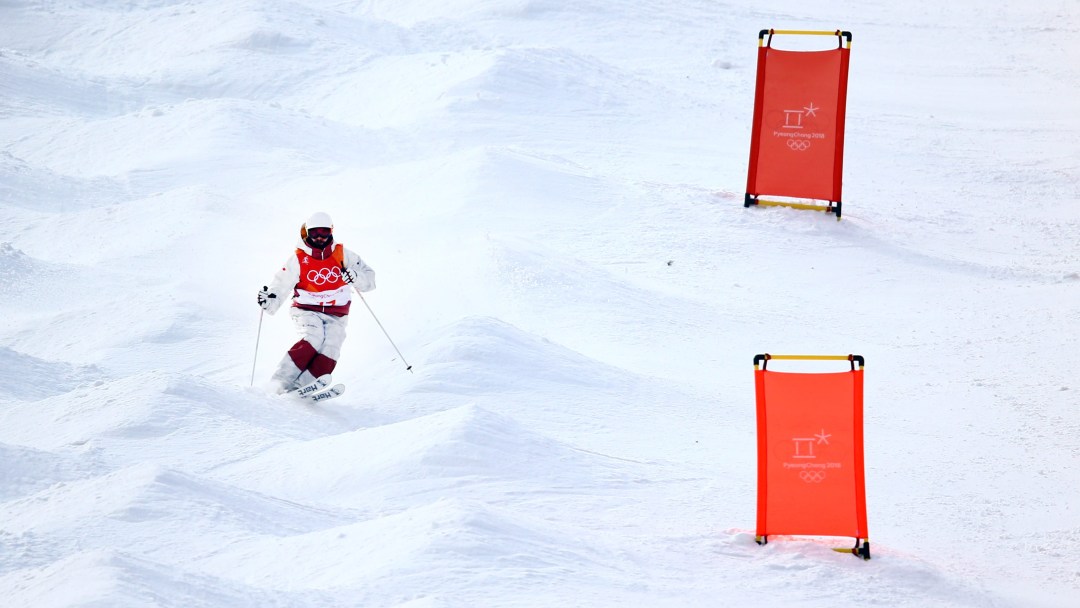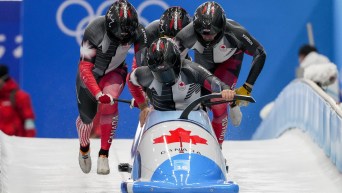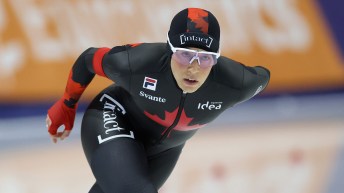Snow sports face major challenges from climate change but steps to sustainability are being taken
Philippe Marquis is a two-time Olympian in moguls who, since retiring in 2019, has devoted himself to helping develop the next generation of Canadian moguls skiers. Now a coach with Freestyle Canada, Marquis is also the chair of the COC Athletes’ Commission.
No matter which of those hats he wears, one thing that never changes is his dedication to promoting sustainability and being an advocate for climate action.
Working in a snow-based sport, Marquis has experienced first hand the impacts of climate change on freestyle skiing. He shared with Olympic.ca some of the things that make him nervous, but also some of the positive efforts that make him feel proud and optimistic for the future, and how everyone can play their part in protecting the planet.
What changes have you seen within your own sport of freestyle skiing due to climate change?
PM: In the last decade, so many climate-related factors have affected my sport. To start, I’d say the shift in winter months and lack of consistent snow at both ends of the season. Pre-Christmas events used to be a formality, but we’ve had more and more cancelled events, to the point of having just a few places in the world able to host consistently. The same thing applies to the late March and April events. Organizers are relying more and more on artificial snow, which results in harder conditions with ice and thin snow packs.
At the end of the day, the reliability of our venues is not quite as good as it used to be. In 2024-25, I’d say tentatively that half of the events I attended with our athletes, the event was affected by a weather condition (fog, high winds, snow, rain, extreme cold, etc.) that impacted the normal schedule.
Now, let’s turn the attention to our off-season and it gets worse. Glaciers are melting globally. Regions that used to have snow and kept operating in our traditional summer months are almost non-existent. Just a few rare spots still operate and the obvious supply and demand causality has made it very costly for teams to travel and train at these venues. We need to have mitigation plans and adapt to new circumstances constantly.

What are some of the steps the sporting community is taking to protect sporting opportunities? What are some of the key challenges?
PM: The biggest challenge is to extend access to snow during the year, across all seasons. The sporting community has started to farm snow at the end of their winter season and some resorts store massive amounts of snow under giant tarps to preserve what they can and offer an early start the following year. On a best-practice scale, many have finally opened their eyes on their carbon footprint and are initiating conversations about their impact and different ways they can be more sustainable in their day-to-day operations.
It’s certainly not easy to change longtime habits and actually spend energy on new mentalities, whether we’re talking about supply chain, partners, delivery of a product or service, and most importantly, building a sustainability plan. While we are still years away from making sustainability something “normal” and implemented in organizational strategy, planning, and operations, I’m happy to see we’re far beyond the “denial” phase and people are actually looking into sustainability reports and building climate action plans. I feel we are now at the phase of unlocking resources, both people and financial, to deliver concrete actions.
Can you share a bit about the sustainability work you’ve done as the chair of the COC’s Athletes’ Commission? What are you most proud of?
PM: As members of the COC Athletes’ Commission, it was important to bring this topic forward, especially after the COC made a commitment to the “Planet” pillar as part of the Team Canada Impact Agenda. A few of us within the commission were already passionate climate advocates in our own space and we felt we needed to be more vocal about this topic for future generations of athletes.
We regrouped in a sub-committee to meet on a semi-regular basis with COC staff to ensure alignment with the UN Sport for Climate Action framework. We also wanted the COC to be involved in various community building events and awareness days throughout the calendar year, such as Earth Day in April, Olympic Day in June, and Green Sports Day in October. Participating in these events would ignite awareness around sport sustainability, generate education opportunities, highlight green athletes and their actions, and showcase the COC as a sport leader that cares about nature and our sporting environments.
On top of that, we supported the OLY Canada Legacy Grant selection committee in awarding “Planet” pillar funds to athletes who had eco-focused projects in their community. All in all, when I see a combined 85% of athletes agree or strongly agree with wanting the COC to prioritize sustainability through action, advocacy, and events/initiatives, I’m happy that our voice is being heard, the conversation is happening, and the COC has approved a real, tangible action plan.
What sorts of conversations are you having with other athletes, as well as with sport administrators at the provincial or national levels, about sustainability?
PM: With other athletes, we normally talk about various individual actions and practices we can implement. I’ve also always been fueled by using my platform and my athlete voice to influence whoever would be interested around me. So, I always talked about the unifying and inspiring power of athletes when it comes to caring about a serious topic like climate change. Athletes that depend on nature and the outdoors are extremely concerned about the future of their sport and the long-term and exponential changes that are not so long-term anymore. Between us, this is REAL talk. Real and scary. But, I think we, as athletes, understand that our power lies in advocacy and lobbying those that are in decision-making positions and are the leaders in policy making and board rooms. When we have volume and unity in our voices, we know how powerful we can be.
With sport administrators, the conversation is about awareness, urgency, and action planning. Understandingly, while not everyone has the resources and the time to really take a deep dive into sustainability, some are starting to develop and implement tangible action plans that not only affect their daily operations, but also the way they organize events and deliver their sport to the community. I think there’s quite some magic operating when ONE organization shows what’s possible in terms of sustainability and it can pave the way for others to follow. As I’ve learned talking with FIS (International Ski and Snowboard Federation) and through deeper learnings, it’s not about being perfect or everything for everyone, but it’s about finding working areas within your organization where you can act positively and reduce your global impact (energy, logistics, transport, accommodation, food, waste management, biodiversity and nature conservation, communication and community engagement).
How does your climate advocacy relate to your approach to coaching athletes?
PM: As a young coach, athletes that I work with are aware of my various involvements around sport and sustainability. They are well aware that I’m far from perfect myself, but I put effort into my climate advocacy journey and use my voice to foster positive changes around me because I care about the places where we practice our sport.
Through your athletic journey, I think you can make a lot of connections with protecting your sporting environment. On one hand, as a coach, I’m trying to teach technical skills and ways to connect those skills to real changes and improvements. With effort and time, that training will hopefully turn into optimizing potential and successful behaviors for both on and off the field of play. Resilience and determination are key to overcoming challenges and self-motivation will push oneself above any sort of adversity. So, to me, there was always a sense of responsibility to support the next generation of athletes and set them up with similar or better opportunities than I’ve had. Through my climate advocacy journey, I’ve developed a similar attitude that I had as an athlete that I now try to transmit to athletes that I work with!
If Team Canada athletes or fans want to get more involved in environmental initiatives, what would your advice be?
PM: My biggest advice would be to get involved with something you truly care about and to start small, one bite at the time. I think it’s also important to do something close to you, your sport, and your community. There are so many environmental initiatives out there that it’s easy to get lost. Focus on things near you, learn about them, talk about them, act on them. Never back down from any small initiatives. It’s very easy to feel discouraged but any positive action is better than nothing. Lastly, I would also recommend reaching out to your network to initiate a conversation with someone that you might have heard talking about sustainability or eco-friendly actions. I believe most people can refer to at least one person. If not, I encourage anyone to reach out to us at the COC Athletes’ Commission and we’ll be happy to have that intro conversation with you!




